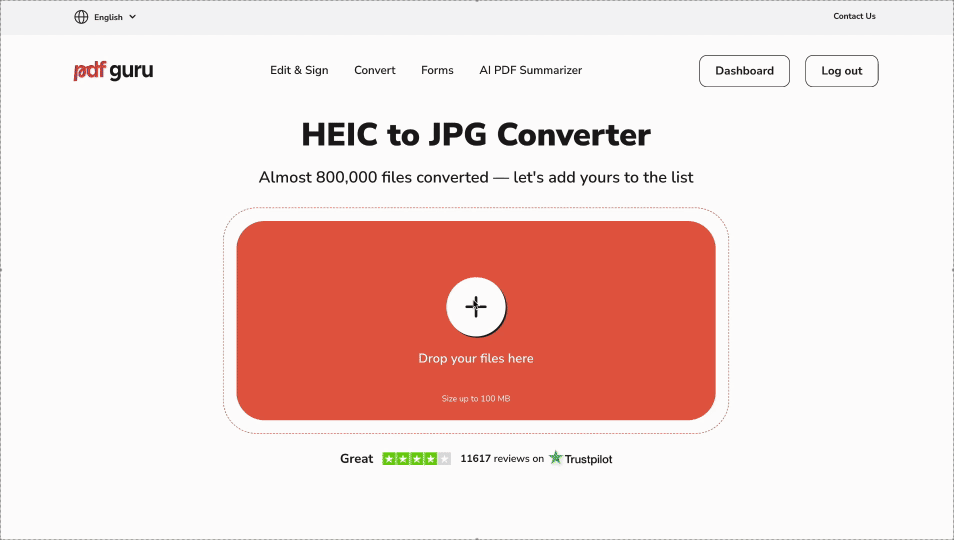HEIC is quickly gaining popularity, especially as the default photo format on iPhones. But can it really beat the classic JPG? In this guide, we will unpack the difference between HEIC and JPG, covering image quality, device compatibility, and file conversion options.
What is HEIC?
HEIC (High Efficiency Image Container) is a newer file format that keeps image quality high while using less storage space. It’s mostly used by Apple devices and makes saving photos more efficient without sacrificing quality.
What is JPEG?
JPEG, short for Joint Photographic Experts Group, has been the standard format for digital photos for decades. It reduces file size by slightly lowering image quality, which makes it perfect for storing large image collections, uploading to websites, and sharing via email. You might also come across files labeled “.jpg” — that’s simply a shortened version of “.jpeg.” The shorter extension caught on due to early Windows systems only supporting three-letter file names.
Is HEIC the same as JPEG? How is it different?
While both are image formats, choosing between them depends on your needs — whether that’s saving space, sharing files, or maintaining high quality.
| Feature | HEIC | JPEG |
|---|---|---|
| Compression | Up to 50% smaller than JPEG; supports lossless compression | Less efficient compression |
| Quality | Better image quality at smaller file sizes | Lower image quality |
| Compatibility | Limited compatibility (native support on iOS, macOS, and some modern apps) | Widely supported on nearly all platforms |
| Multi-image support | Can store multiple images (e.g., Live Photos, bursts) | One image per file |
| Color depth | More vibrant colors and smoother gradients | Fewer shades, less color detail |
| Adoption | Gaining popularity but not universal | Long-time global standard |
| File extension | .heic | .jpg, .jpeg |
Is HEIC or JPEG better in terms of image quality?
The HEIC file type usually gives you better quality than JPEG, even with a smaller file size. But that doesn’t always mean it’s the best choice. For example, if you're editing high-dynamic-range (HDR) photos or want smoother color transitions, HEIC is a better fit. On the other hand, if you're sharing images online, uploading to websites, or using older software, JPEG’s broad compatibility makes it a better option — even if the quality isn’t as high.
Does converting HEIC to JPEG reduce quality?
Yes, converting HEIC into a JPEG image file usually means some loss in quality. HEIC stores more color detail and uses advanced compression, so when you switch to JPEG, which has older, lossy compression, you may lose sharpness, dynamic range, or subtle color transitions. The difference might be minor in casual photos, but it’s more noticeable in high-detail or HDR images.
That’s why, if you need to convert, it’s worth using a tool like PDF Guru — we do our best to preserve image quality during conversion.
How to convert HEIC to JPEG with PDF Guru

Go to our HEIC to JPG converter and follow these simple steps:
- 1
- Upload your HEIC file into the box.
- 2
- Wait a few seconds while the tool converts into a JPEG file.
- 3
- Download your new file — we’ll also save a copy to your account.
Want to explore more image formats? Try out more of our converters — we support everything from JPG to PNG, GIF to JPG, PNG to WEBP, and beyond.
Why does iPhone use HEIC?
Apple introduced the HEIC photo format on iPhones as a more storage-efficient alternative. It was designed to reduce file sizes without noticeably affecting how photos look. It also supports newer features like better color accuracy and multiple images in one file, which makes it more flexible than older formats like JPEG.
HEIC vs. JPEG: Final thoughts and best use cases
HEIC format
Perfect for anyone who wants high-quality photos without taking up too much storage — especially on Apple devices.
Mobile photographers who value smaller file sizes without sacrificing quality
Designers working with HDR images or Live Photos
Creatives who need to save space while keeping rich image detail
JPEG format
Great if you need images that work everywhere and are easy to share across platforms.
Web developers and bloggers uploading photos to websites
Real estate agents and online sellers who need quick-loading images
Marketers designing visuals for emails or online ads
Teams working with older software or sharing files across different systems
Well, we’ve covered everything — from the HEIC meaning to its advantages and drawbacks versus JPEG. Now, think about your workflow and decide which format suits your needs best!
